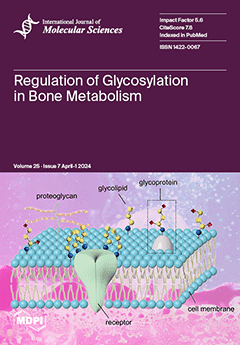Kaempferol (KAE) is a natural flavonoid with powerful reactive oxygen species (ROS) scavenging properties and beneficial effects on ex vivo sperm functionality. In this paper, we studied the ability of KAE to prevent or ameliorate structural, functional or oxidative damage to frozen–thawed bovine
[...] Read more.
Kaempferol (KAE) is a natural flavonoid with powerful reactive oxygen species (ROS) scavenging properties and beneficial effects on ex vivo sperm functionality. In this paper, we studied the ability of KAE to prevent or ameliorate structural, functional or oxidative damage to frozen–thawed bovine spermatozoa. The analysis focused on conventional sperm quality characteristics prior to or following thermoresistance tests, namely the oxidative profile of semen alongside sperm capacitation patterns, and the levels of key proteins involved in capacitation signaling. Semen samples obtained from 30 stud bulls were frozen in the presence of 12.5, 25 or 50 μM KAE and compared to native ejaculates (negative control—Ctrl
N) as well as semen samples cryopreserved in the absence of KAE (positive control—Ctrl
C). A significant post-thermoresistance test maintenance of the sperm motility (
p < 0.001), membrane (
p < 0.001) and acrosome integrity (
p < 0.001), mitochondrial activity (
p < 0.001) and DNA integrity (
p < 0.001) was observed following supplementation with all KAE doses in comparison to Ctrl
C. Experimental groups supplemented with all KAE doses presented a significantly lower proportion of prematurely capacitated spermatozoa (
p < 0.001) when compared with Ctrl
C. A significant decrease in the levels of the superoxide radical was recorded following administration of 12.5 (
p < 0.05) and 25 μM KAE (
p < 0.01). At the same time, supplementation with 25 μM KAE in the cryopreservation medium led to a significant stabilization of the activity of Mg
2+-ATPase (
p < 0.05) and Na
+/K
+-ATPase (
p < 0.0001) in comparison to Ctrl
C. Western blot analysis revealed that supplementation with 25 μM KAE in the cryopreservation medium prevented the loss of the protein kinase A (PKA) and protein kinase C (PKC), which are intricately involved in the process of sperm activation. In conclusion, we may speculate that KAE is particularly efficient in the protection of sperm metabolism during the cryopreservation process through its ability to promote energy synthesis while quenching excessive ROS and to protect enzymes involved in the process of sperm capacitation and hyperactivation. These properties may provide supplementary protection to spermatozoa undergoing the freeze–thaw process.
Full article






